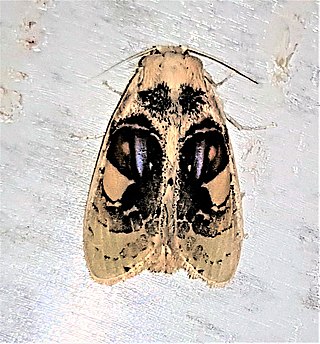Notiophanes is a genus of moths in the family Arrhenophanidae, consisting of only one species Notiophanes fuscata, which is endemic to Queensland, Australia. It is only known from a single female specimen.
Palaeophanes lativalva is a species of moth in the family Arrhenophanidae. It is only known from the type locality, which is situated in a wet forested area in the central mountain range of Taiwan, at an elevation of about 1,400 m.
Palaeophanes brevispina is a species of moth in the family Arrhenophanidae. It is only known from Brunei.
Palaeophanes xoutha is a species of moth in the family Arrhenophanidae. It is only known from Malaysia.
Cnissostages oleagina is a species of moth in the family Arrhenophanidae family. It has a wide range in the Neotropical Region from Sinaloa, Mexico to southern Brazil and Paraguay.
Cnissostages mastictor is a species of moth in the family Arrhenophanidae. It is found from Costa Rica to Peru.
Cnissostages osae is a species of moth in the family Arrhenophanidae. It is known only from the Osa Peninsula in southern Costa Rica.
Dysoptus fasciatus is a species of moth in the family Arrhenophanidae. It probably has a wide distribution in the lowland Amazon rainforest. Currently it has been collected only at the type locality in southern Venezuela and possibly in Peru.
Dysoptus pseudargus is a species of moth in the family Arrhenophanidae. It is known only from the lowland Amazonian Region of southern Peru.
Dysoptus prolatus is a species of moth in the family Arrhenophanidae. It is known only from the type locality and mostly from primary forests of La Selva, Costa Rica.
Dysoptus anachoreta is a species of moth in the family Arrhenophanidae. It is known only from the type locality, Sierra del Libano, a dense subtropical forest and a spur of the Cuchilla San Lorenzo on the south-western Sierra Nevada de Santa Marta in Magdalena Province of Colombia.
Dysoptus tantalota is a species of moth in the family Arrhenophanidae. It probably occurs widely through the lowland Amazon rainforest. Currently it is known only from Guyana and southern Venezuela.
Dysoptus probata is a species of moth in the family Arrhenophanidae. It is known only from the type locality in south-western Guatemala.
Dysoptus bilobus is a species of moth in the family name Arrhenophanidae. It is known only from the type locality, a lowland, tropical rainforest habitat in Costa Rica.
Dysoptus pentalobus is a species of moth in the family Arrhenophanidae. It is known only from the type locality in the Atlantic coastal forests of south-eastern Brazil.
Dysoptus avittus is a species of moth in the family Arrhenophanidae. It is known only from the type locality in southern Brazil.
Dysoptus acuminatus is a species of moth in the family Arrhenophanidae. It is known only from the type locality in southern Venezuela, but it almost certainly will be found elsewhere in the lowland Amazon rainforest.
Dysoptus spilacris is a species of moth in the family Arrhenophanidae. It is common in both primary and secondary forests in La Selva, Costa Rica. It also has been found in the adjacent Braulio Carrillo National Park and in the Mexican state of Veracruz.
Dysoptus argus is a species of moth in the family Arrhenophanidae. It has a wide range in lowland wet forests of the Amazonian Region of northern South America from southern Venezuela and Guyana to Peru and Brazil.

Arrhenophanes perspicilla is a species of moth in the family Arrhenophanidae. It occurs throughout much of the lowland Neotropical Region from the state of Veracruz in Mexico to Misiones in Argentina and Rio Grande do Sul in southern Brazil. It is absent from the West Indies.
This page is based on this
Wikipedia article Text is available under the
CC BY-SA 4.0 license; additional terms may apply.
Images, videos and audio are available under their respective licenses.
